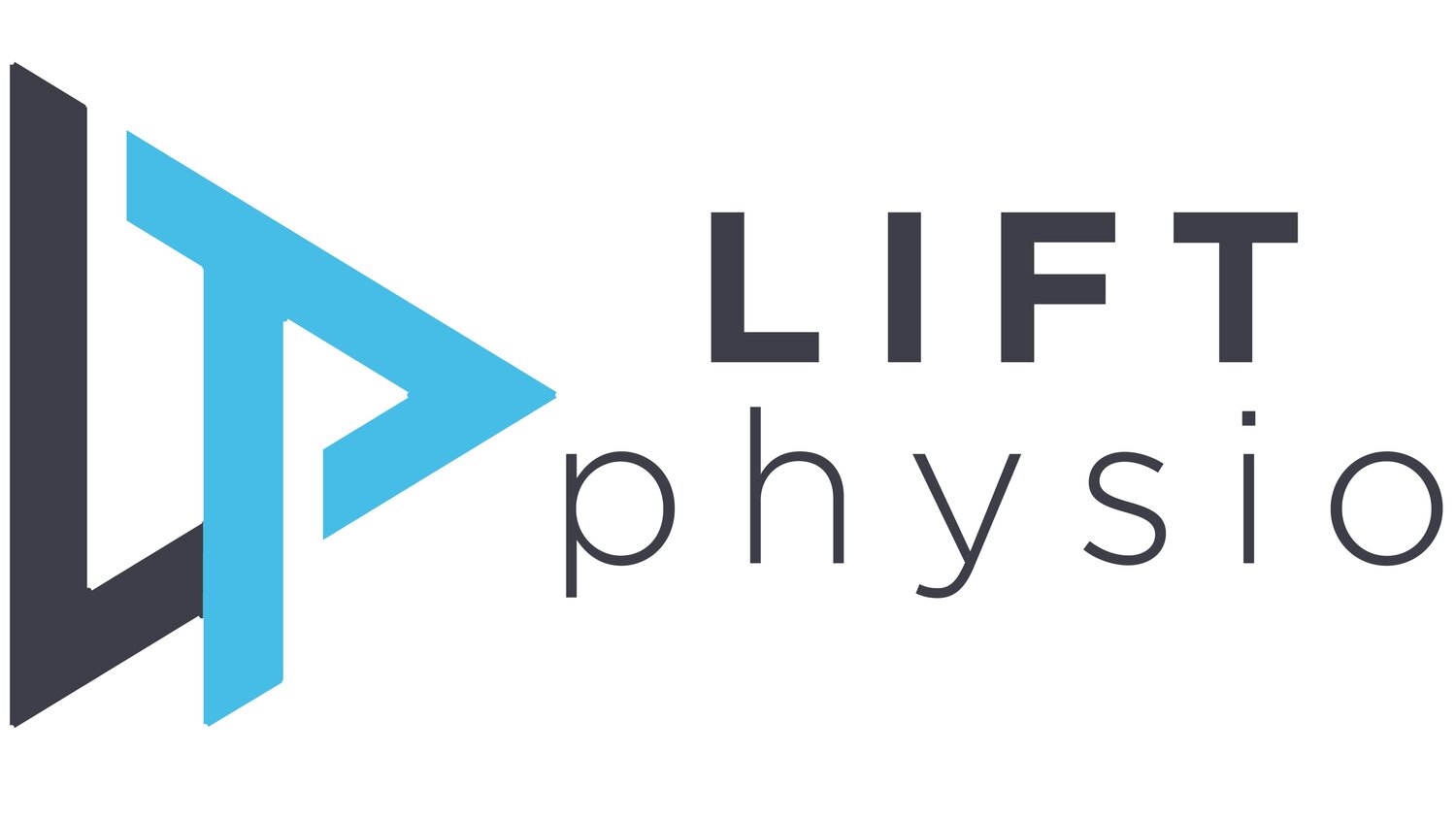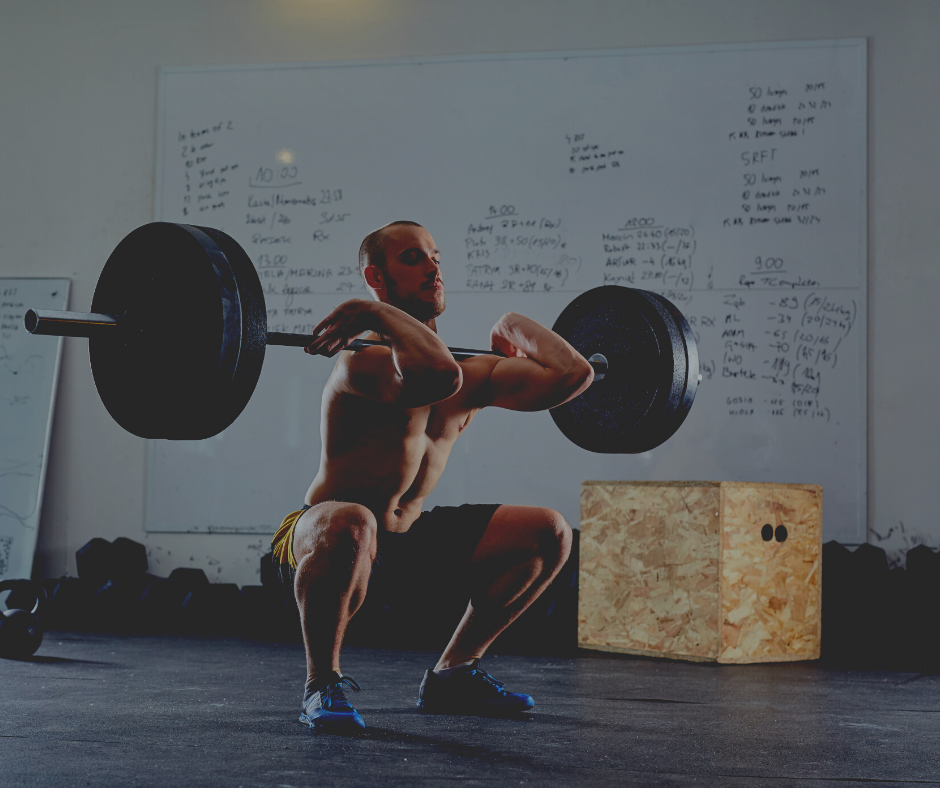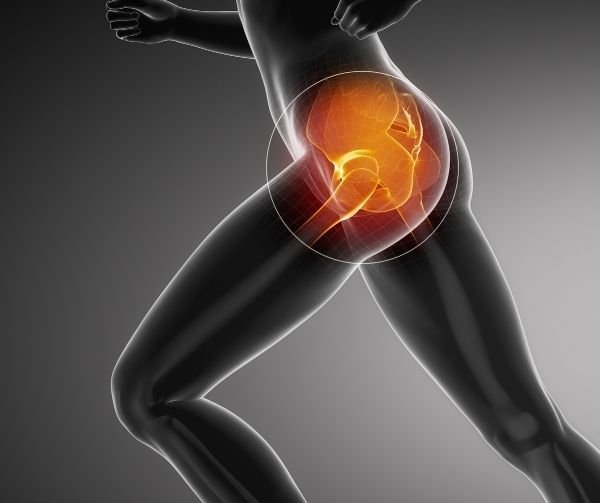Three Reasons Why Your Squat May Be Causing Your Hip Pain, And How To Fix It
The squat is an awesome exercise for building athletic power and strength for a number of different sports. However, pain in the front of the hips as a result of squatting is also very common. This can often present as conditions known as femoral acetabular impingement (FAI), or hip labrum tears.
Here are three reasons why your squat may be causing hip pain, and tips on how to fix it:
Number one - Ankle Mobility
If you're squatting with limited ankle mobility then your body will need to make up for that lack of mobility somewhere else (often putting increased pressure on the hips). One quick way to measure your ankle mobility is the knee to wall test. Start with your foot up against a wall and see if you are able to touch your knee to the wall, with your heel staying on the floor. If your knee can touch the wall, slide your foot back a few centimetres at a time to see how far back your foot is able to slide with your knee touching the wall whilst keeping your heel on the floor. As a general guide - to be able to perform a deep squat, roughly 10 centimetres is a good number to aim for.
Ankle mobility can be restricted for a number of different reasons, such as muscular tightness or a restriction within the joint itself.
Check this video for a brilliant example on how to perform the knee-to-wall test, as well as 3 Ankle mobility exercises
Number Two - Hip Mobility
Another cause of pain in the hip during squats can be due to a restriction in your hip mobility and in particular, its ‘rotational’ mobility. One exercise to improve your hip mobility is the pigeon stretch.
Watch this great demo of the Pigeon stretch to improve your Hip Mobility
Number Three - Core Stability
The inability to maintain a good spinal position during the squat can also contribute to anterior hip pain. For example, if your pelvis tilts too far forwards during a squat leading to excessive lumbar spine extension, this can put pressure on the front the hips.
Try the four point kneeling rock-back exercise to practice maintaining a neutral spine, whilst moving into a squat position to get a sense of how deep you can go in the squat whilst maintaining a nice neutral spine.
Try placing an object like a cup on your lower back to give you some feedback about how well you can maintain a nice neutral position through your spine as you “Rock back” into the deep squatting position.
Bonus reason - Hip Joint Structure
Sometimes the main reason why anterior hip pain occurs during the squat is actually due to the structure of the hip joint itself (for example, having a deep ball and socket joint versus having a more shallow ball and socket joint). Unfortunately, this is a genetic factor and there's not much you can do to change this. However, one thing you can do is find the right squat stance for you, based on your individual joint structure. Play around with your foot position (for example, you may need to have your feet slightly narrower or wider apart, or you may need to have your toes pointing straight ahead or turned out slightly.) to find the position that works best for you.
Quick Answers To Common Questions About Hip Pain And Squatting:
Why does my hip hurt when doing squats?
Hip pain during squats is a common complaint among weightlifters and other athletes. There are several possible reasons for this pain, ranging from minor muscle strains to more serious problems such as hip impingement syndrome. Most hip pain can be treated with simple rest and ice, but more severe cases may require medical intervention. In any case, it's important to listen to your body and stop squatting if you experience any hip pain. Ignoring the problem and continuing to exercise while in pain can only make the problem worse. If you're not sure what's causing your hip pain, consult a physiotherapist for a proper diagnosis. With the proper treatment, you should be able to enjoy pain-free squats in no time.
There can be many causes of hip pain from squats as described above. One of the most common reasons why hip pain occurs during squats is due to tight hip muscles. The hip is a complex joint, and it relies on the surrounding muscles for stability. If these muscles are tight, they can pull on the hip joints and cause pain. Another common cause of hip pain during squats is hip bursitis. This condition occurs when the fluid-filled sacs that cushion the hip joints become inflamed. Bursitis often leads to stiffness and painful movements. However, both of these conditions can be treated with stretching, strengthening, and other physical therapy exercises. If you experience hip pain during squats, it's important to determine the true underlying cause and create a treatment plan.
How do I stop my hips from hurting when I squat?
When you do a squat, your hip joint bears the brunt of the load. The hip joint is a ball-and-socket joint, with the ball being the top of the thigh bone and the socket being part of the pelvic bone. The hip joint is held together by ligaments and muscles, and it is protected by a layer of cartilage. When you squat, all of those structures have to work together to support your weight and keep the joint stable (not to mention the other joints further up and down the chain). If any of those structures are not working properly, it can lead to hip pain. For example, if you have weak hip muscles, they may not be able to stabilise the joint as well, leading to pain. Or, if you have tight muscles or ligaments, they may pull on the hip joints and cause pain. The best way to stop hip pain from squats is to find the underlying cause and treat it accordingly. If your hip pain is due to weak muscles, you will need to do exercises to strengthen those muscles. If your hip pain is due to tight muscles such as tight hip flexors, you will need to do stretches and other exercises to release the tension. You may also need to change your squat technique if you are doing something that is causing undue stress on the hip joints. In any case, it's important to seek medical advice if your hip pain does not go away with self-treatment.
Will improving my core stability help?
There are several benefits to improving core stability when squatting, including reduced hip pain. By engaging the core muscles, you can take some of the pressure off of the hips and redistribute it throughout the body. This not only reduces pain in the hips, but it also improves balance and stability. In addition, better core stability can help to improve your squatting technique and prevent injuries. So if you're looking to reduce hip pain and improve your squatting form, focusing on core stability is a great place to start.
Why do I feel my hip pinching when I squat?
One common reason why people their hip pinching when they squat is hip impingement. This occurs when the bones in the hip joint are not able to move smoothly past each other, causing the tissues to become compressed. If you're experiencing hip impingement, stretching and strengthening exercises may help to relieve this hip pinching sensation at the front of the hip.
How do I improve my hip mobility?
To improve hip mobility, it's important to focus on hip flexion, hip extension, internal rotation, and external rotation. Hip extension exercises help to lengthen the hip flexor muscles, which can become tight from sitting for long periods of time. Internal rotation and external rotation exercises help to stretch the muscles and ligaments around the hip joint, making it easier to move the hip through its full range of motion. For best results, perform these exercises regularly - with consistent practice, you'll soon notice an improvement in your hip mobility and will be squatting pain free in no time.
Other helpful resources for gym-goers
Should your knees go past your toes when you squat?
When it comes to squatting, there is a lot of debate about the ideal form. Some experts say that your knees should never travel past your toes, while others argue that this isn't always necessary. So, what's the right answer? Check out this article to find out.
lower back strengthening exercises to relieve pain
Anyone who has ever suffered from lower back pain knows how debilitating it can be. Even simple movements, like squatting down to pick up a vase, can become impossible. Fortunately, there are a number of exercises that can help to strengthen the lower back and relieve pain.
References:
Prevalence of Femoroacetabular Impingement Imaging Findings in Asymptomatic Volunteers: A Systematic Review.





